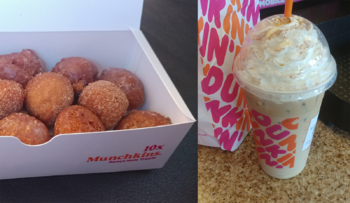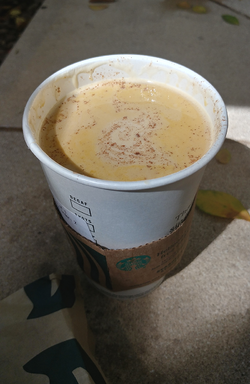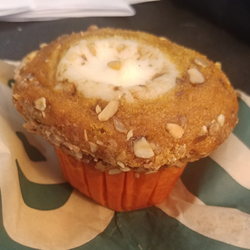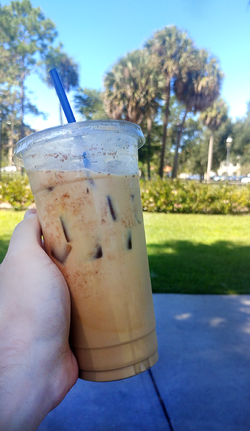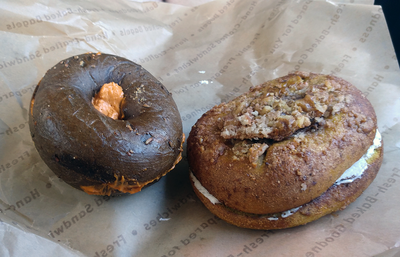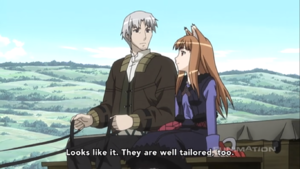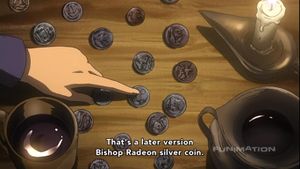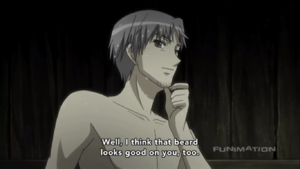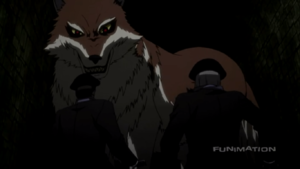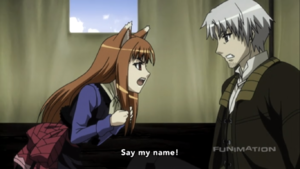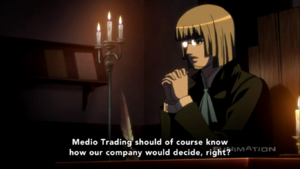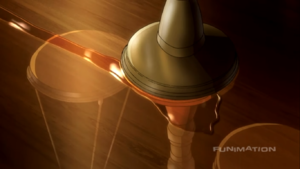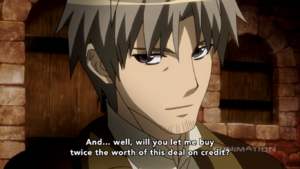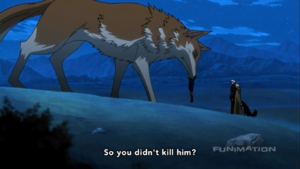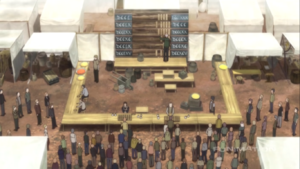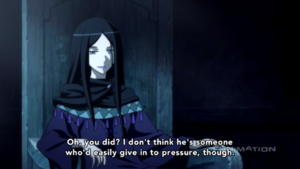Director's Notes
Are those chills down your spine the signs of an imminent possession, or just a cold front? It's Halloween!!!!!!!
💀⚰️🎃🕸️🦇🧟🧛🧙👽👻👺👹😈🍫🍭🍬
Welcome, mortals, to the most haunting month out of the year where everything is spooky, scary, ghosty, and fun! Enjoy your stay here in Critic Corner, if you dare. Will you get a trick or a treat?
Thank you all again for voting Half-Baked Reviews as Critic Corner's Section of the Month!! Be sure to give your love to all of our sections here, and give a shout out to our writers whether in chat or in their forum threads dedicated to their sections. Don't leave your spirit behind, haunting with unfinished business; scroll to the bottom and vote!
If you would like to help Critic Corner, we always have openings for more writers! You are free to write for sections such as Character Review and Movie Review, or really anything you'd like to do! There's no pressure to have a huge section; they can be shorter and concise! The application process is very simple, starting with reading the Sign Up page, and sending your application to LudwigVon, our Stats Manager on the forum. Any idea you have is welcome, and if you have any questions or need help signing up, please feel free to reach out to myself or other 'Shroom peeps!
Section of the Month
| Critic Corner SECTION OF THE MONTH | ||||
|---|---|---|---|---|
| Place | Section | Votes | % | Writer |
| 1st | Anton's Half-Baked Reviews | 8 | 47.06% | Hypnotoad (talk) |
| 2nd | PK144's Corner | 4 | 23.53% | Parakoopa144 (talk) |
| 3rd | Smashing Reviews | 3 | 17.65% | Smasher (talk) |
Gotta give credit to Halloween and its champion for holding the wall against the ever-approaching Christmas. Sorry, cinnamon, I know people have been trying to hype you up as being one of the true heralds of autumn vibes and number one, but you’re duplicitous in that you can advocate for winter as well, if not more strongly. For now, your job is to team up with nutmeg, ginger, clove, and allspice in this great month of October as our victor ludorum, conqueror of supermarkets, squire of squash, ghoul of gourds, pumpkin spice.
Is your blood already boiling? Do you have a family member or acquaintance who will swiftly breathe fire and fury at the mere implication of someone else enjoying a seasonal treat? Well settle in for an Anton rant before we get to the actual review. Ok, well, here I was readied up to write a lot of words on this, but there is already an incredibly well-rounded and sourced article on Vox about this, going over some of the more limp-noodled hand-wringing responses heavily based in sexism, as well as a more pensive and nuanced thought on the outrage being a response to generalized discomfort over transparent capitalist tricks and marketing manipulation marked by the absolute inundation and oversaturation of the market with the orange gourd. If there were a vote for either one, I would (un)comfortably be on the side that it’s just smug contempt for women and the feminine. Now, some of this academic pondering may feel like a reach, but I have perfectly fine anecdotal experience to refer to, and I’m sure you all do, too, of a coworker or classmate or just someone on the street call someone “gay” or “basic” for getting a pumpkin spice latte, sweet drink (liquor or not), or, god forbid, a salad, but never give a care in the world to masculine trends like craft beer and bacon, outside of the horseshoe back to lambasting the ‘feminization of men’ regarding hipsters. My experience with people who are anti-pumpkin spice falls more in line with protecting their virile bravado from pansy delights because only the weak and girly are allowed to enjoy something, more so than the average person being concerned with the underlying mechanisms of capitalism that shape our consumption patterns. Really, please, just read this article, I’m going to link to it again and make sure you actually read it as well as navigate to all of the linked sources. Before you start telling your favorite gamer-slash-literal-Nazi social media star about my transgressions against my own gender, I’m just saying to consider the necessity and potential hypocrisy of your selected outrage, as it could just be a tell for something just a little deeper. This article is also really good, if only for the correct amount of sass, as well as the Someecards-based insult that directly attacked 2008 me.As for why people do like it, check out this article and this article which puts it all in a nice list. Tl;dr it makes people happy.
Anyways, hopefully my October special here is a bit more informative and valuable, if not dogmatic, than other pumpkin spice reviews. By the time this article goes up, October is already halfway gone, but with pumpkin spice season comfortably flowing through November and into December, there will be plenty of time for you all to go out and try whichever one I’ve convinced you is worth your money, or at least worth your spite to prove me wrong. Oh, except for Krispy Kreme, which ran its “Pumpkin Spice Original Glazed Doughnut filled with cheesecake Kreme and decorated with cheesecake icing” for a pathetic week, just September 2nd through September 8th; the Pumpkin Spice Original Glazed® has a bit more longevity, but is still already gone as of September 22nd with its transparently marketed bonus week. Though their pumpkin spice cake doughnut is still (should be) available, I’m not a big fan of explicit manipulations of supply and demand to trigger more hype and sales; I guess I’m that one outlier from that previous paragraph up there. They even went so far as trying to cash in on the knocking of other pumpkin spice products with a “purchase protection” campaign where you can trade in a ‘problematic’ pumpkin spice product, whatever it may be, to receive a ‘free’ (read: not free because you’re still giving them something) 99¢ pumpkin spice glazed donut.
Finally, before I get into actually reviewing stuff like I’m supposed to, expect to see me alternate between ‘donut’ and ‘doughnut’ depending on how the product itself is spelled or how I’m feeling in that exact second because language is fluid and nothing is that serious or matters. Relax, go have some Pumpkin Spice Spam, live your life.
Dunkin Donuts
I had to wait this one out because right as I was prepping to do this (as well as work on some other future reviews that feature coffee and chocolate) I got a huge lesion in my mouth that made it impossible to enjoy anything for a solid week, and conveniently coffee is something that’s acidic and aggravates mouth sores and potentially perpetuates them. We really need to put a rush on that whole transhumanism thing; I’m tired of it being a trendy talking point on Facebook leftist pages and Brooke Candy music videos, I want my robot body and I want it NOW. Aside from that, I downloaded Dunkin’s app for this because I wanted to be able to peruse the menu without standing there awkwardly being watched, but also because there was a discount that came with it. I’m glad society is finally awarding social anxiety. Thankfully all of their seasonal stuff was crammed into one option easily accessible right on the front screen.
Cinnamon Sugar Pumpkin Signature Iced Latte
I got it as it comes, unadulterated, with whole milk, no extra sugar, regular ice, whipped cream, caramel drizzle, and cinnamon sugar. Gotta say, it looks neat. I applaud the worker who made it for successfully putting just enough whipped cream on it to fill the lid without getting any on it. Looks like a nice cold dessert drink for me to ruin by pressing it against my forehead to survive 100F weather in a car that has no proper air conditioning. The actual flavor us pretty subtle all around, though. I don’t notice the pumpkin as much as I do the cinnamon or coffee flavors, but they’re all there and I can feel them and they work well together. The drink is smooth and creamy, especially after the whipped cream dissolves into it, serving as a lesson in the virtue of patience, as this treat would’ve been missed had I hastily slurped up the whipped cream like a famished dog forced to do unspeakable acts. Not too sweet, not too bitter, probably my best experience with a coffee beverage thus far.
Pumpkin Muffin
A pumpkin muffin with some streusel-like crumbles, and hard sugar glaze. Pretty dry, very crumbly. The pumpkin flavor is kinda there, I guess, but it just feels like it got stale and the taste evaporated with the rest of the moisture. If they branded it as a pumpkin coffee cake and gave it some more crumbles, it would be a little better as you’d sorta expect to have to clean up more off of your body and floor than you ingest.
Pumpkin Donuts
I should note that my baseline for what to expect from this comes from living in New York for over 25 years and having access to Tim Hortons, regularly ordering 40 packs of chocolate glazed Timbits to the shock and horror of my drivers I would dispatch to get them for me. They were basically crack for me. It’s not that Dunkin didn’t exist, in fact there was one directly across the street, but it was just not necessary as all of our regional pride was wound up inside of a Canadian company. Dunkin’s pumpkin donuts were covered in some kind of sugar; not sure if the sugar is flavored or not, but regardless it takes upon to mythical annoyance of glitter, in that it gets everywhere. They’re just really not appealing at all. The sugar gives it a really annoying texture and crumb problem, with the actual donut not yielding much softness or flavor to at least compensate. They taste a lot better after sitting on my table for two days after I left them there with no motivation to continue eating them other than the late-stage “I don’t want to throw these out and waste so much” panic. Not sure why they taste better after drying out even more than they did, but they do.Final Word: I can see why Dunkin’ Donuts is removing the ‘Donuts’ from their name. I’d much prefer if they actually put some effort into their namesake, but I guess corporate greed prevents thinking any further than how to reduce costs. Don’t even waste your time, there’s enough different coffee shops around that offer bakery goods that are better, and if you’re lucky you live in an area that just has standalone bakeries and donut shops. Their coffee is good, though.
Starbucks
This year it made headlines that Starbucks was going to release its Pumpkin Spice Latte on August 27th, the earliest date yet. Dunkin Donuts beat them to it, and their own Pumpkin Spice blends have already been available in grocery stores for at least two weeks prior, but I guess no one cared or paid attention. It’s all about that PSL.
Pumpkin Spice Latte
Arriving on this planet from corporate starships in 2003 after having been pleased with the success of their Peppermint Mocha seasonal drink, this iconic beverage has become a harbinger of the end of Summer, herald of Fall. Success was immediate and abundant, quickly becoming one of Starbucks’ most popular and famous drinks, entering pop culture and shifting the entire market, spurring a cascading trend of pumpkin spice products from grifters in other companies trying to make a buck off of the discovery of the flavor. Up until 2015, there was actually no pumpkin in the recipe, and instead just the spices used in pumpkin pie, until the case of a pseudoscience-peddling monster being sorta right for once twisting Starbucks’ arm into adding a small amount of pumpkin puree and removing artificial colors. As this is my first time trying it, I will never know what the original tasted like, so feel free to let me know if you have. On the opposite end of the spectrum from the peeps I railed against in my opening, fans of pumpkin spice lattes are generally pretty shocked that I’ve never tried it. It’s not because I’m against the seasoning, or the concept, it’s just I don’t really ever drink coffee because I’m pretty weird about stimulants and depressants and control over my mind and body; rather than explaining that in further detail, I just say I don’t like coffee.
Onto the drink, it tastes pretty good on its own, as it came: 2 shots espresso, 4 pumps Pumpkin Sauce, 2% steamed milk foam, pumpkin spice topping, and whipped cream. I’ve had Starbucks before and I just didn’t like their coffee much. I know I said I don’t like coffee, but I am gay, so iced coffee is fine. I don’t really like any other coffee shop chain coffee, either, Tim Hortons included, but just something about Starbucks was just a bit more irredeemably bitter than the rest. No amount of cream or sugar could expel the sharpness to it. Enter, Pumpkin Spice Latte. The pumpkin spice flavor is barely even noticeable, but it really takes away from the bitterness of the coffee, making it consumable without much alteration. It had a rich and smooth texture, as opposed to thin and watery as coffee drinks can often be; note that this was before I let the whipped cream fully melt into it. I wouldn’t consider this much of a Fall beverage given that I couldn’t even sense any of the supposed pumpkin pie-evoked spices. I’m really just not sure exactly where people get the overwhelming feeling of Fall to support this, or that it’s oppressively sweet as the Starbucks naysayers say about everything that isn’t a locally brewed IPA. It’s kinda middle-of-the-road; a nice cup of coffee. It just has more of a cult of personality. Maybe it’s because I got this in August.
To be thorough I also got the hot version. The experience was pretty much the same, except it was hot and no whipped cream, so the coffee bitterness showed its face a bit more.
Pumpkin Cream Cold Brew
Apparently the first time in 16 years that Starbucks has released another pumpkin seasonal beverage to compete internally with its legendary Pumpkin Spice Latte, hopping onto the cold brew trend. What makes cold brew “cold brew” is that the coffee beans are generally steeped in cold or room-temperature water for hours, rather than conventional brewing methods of passing hot water through the beans or grounds. What this allegedly does is create a different flavor profile and, sure, I believe that, varying heat does affect the chemistry of stuff. I’ve already got a cold brew review in the works in who knows how long, and I’ll get more into the dynamics of that then. This specific drink is the preexisting Starbucks Cold Brew, but with vanilla syrup, pumpkin cream cold foam, and pumpkin spice topping. I got this one unchanged and unpersonalized as well, which you can see in this photo on their site that's pretty accurate to how it looked. This just is NOT good. Weird bitter flavor, and the pumpkin cream doesn’t taste like anything. Maybe I don’t like cold brews and that renders my opinion a little tainted, but at the very least have your seasonal flavored drink taste like that seasonal flavor in any way. I would’ve been a lot more disappointed if I didn’t get this for free thanks to a bogo sale. Personally there’s just no redeeming quality to it, like with the Pumpkin Spice Latte, which also didn’t taste like the spirit of Autumn but at least I could sip it without flashbacks to kombucha.
Pumpkin Cream Cheese Muffin
I appreciate their attempt to set up their baked goods case in an attractive way, but in an open case like this some of the items look, and probably are, a bit dried out. Nevertheless, I intended on getting the Pumpkin Cream Cheese Muffin, which I’ll add that it looks really moldy. I had the option to get it warmed but I know myself better than that, as I would get home and not eat it for several hours anyways. Despite appearances, I can already tell it’s not as dry as the Dunkin Donuts one as it stuck to the bag. Lo and behold, it was nice and moist. A lot sweeter than what I was expecting, too. The pumpkin seed / pepita pieces are a welcome crunch to what would otherwise be almost too smooth of an experience. Graceful pumpkin flavor that remained consistent throughout, with the cream cheese offering a variable in flavor that I can lap up or include in a large bite at will. Though, keep an eye out for the price, as this and the rest of the bakery items can quickly set you back more than you may have intended.Pumpkin Scone
Soft but firm dough hunk with a thick candy-like hard glaze. The smell of pumpkin is there more than the flavor. Surprisingly large and worthwhile if your intention is to sate hunger. I wouldn’t call it a scone, though, more like a large sugar cookie that dried out, or some overbaked bread, as I expect a scone to be more doughy and crumbly, and this was more...solid. If you’re a fan of scones and buy this thinking you’re gonna get a scone, you’re probably gonna be a bit disappointed, but it’s otherwise alright.
Final Word: I appreciate what the impact on our culture the Pumpkin Spice Latte was, helping balance out a more bottom-heavy year that put much of its thematic focus around Christmas and the vague idea of it. As what I believe is the best season, I am glad that there is an avant-courier to signal that it’s time to swap out the flip-flops and swim shorts for flip-flops and jeans. As for the actual fare, a complete opposite of Dunkin, wherein Starbucks’ famed coffee just really did not impress, but their bakery items did. Starbucks’ pumpkin bread is already one of my favorites, so the fact that the pumpkin muffin was good, too, just encourages me to expand further into their bakery selections. Dunkin’ and Starbucks should really just merge their better halves and cut the losses.
Barnie’s Coffee & Tea Co.

A local coffee shop situated in the fancy-pants part of town, founded about 40 years ago and happened to make it big. You can find their bagged coffee in Publix, Meijer, The Fresh Market, and maybe some other stores that I didn’t see in the US all throughout the east of the Mississippi, plus a few in Oklahoma, Louisiana, and Arkansas, barring The Zone of Nothing that is western New York, western Pennsylvania, and West Virginia. At their brick-and-mortar café they have a menu for breakfast and lunch, as well as some bakery goods that are made in-house or provided in partnership with another local bakery, along with their espressos, coffees, teas, and other drinks. They’ve got themselves a nice little Instagrammable corner shop with its own courtyard that makes it feel kinda hidden, which provides a bit of a cozy atmosphere in what’s otherwise a pretty busy place. Their brand was bought by Sara Lee Corporation in 1998, but then Sara Lee was like “nevermind lol!” and divested from their coffee ventures, eventually leading to some rich dude from Miami acquiring it, who then also put it up for sale, and was eventually bought back by the original owner. They apparently have more physical stores, as well as mall locations, but it’s pretty difficult finding information on those or where they exactly are. Apparently some are inside of high schools? Must be nice winning the zip code lottery. Who cares about all that though, I’m just here to get some Pumpkin Spice lattes!
According to the packaging, it’s flavored with cinnamon, nutmeg, allspice, and pumpkin, officially making it pumpkin spice. Medium roast, 100% Arabica, whatever that means for the people who care about that. It has that hint of coffee bitterness, but really none of the acidity that kinda deters me from others. Smooth and creamy, a pleasant slurping experience. I will say that I had no real given option of the amount or type of cream, sugar, or anything else; I’m sure if I voiced my desire, I would, but the option was not presented to me. I can see the spices or grounds or whatever on the inside of the plastic cup, and noticed that it got a lot more stronger in flavor as I got to the bottom, indicating that the drink could’ve either been stirred a bit more than it was, the seasoning just didn’t dissolve, or that the grounds or whatever made their way into the actual drink. It made the ice taste nice, though! As for the flavor I wouldn’t really say I recognized this as a “pumpkin spice” but I could kinda feel some cinnamon and maybe nutmeg, sure; it just didn’t strike me with that feeling of pumpkin pie or walking into a Wegmans in Fall. What it did do, though, is make me a lot more jittery and filled my bladder more than anything else I have experienced before.I went there a second time to try their breakfast, but the people I went with decided to absolutely ruin my day by arguing and retroactively deciding that they didn’t want breakfast after we had already sat down and received waters and menus, so as to not waste the trip I went inside and got a hot chocolate and the Pumpkin Cheesecake Muffin they were advertising. It was like $4+ for a really unappealing muffin that could fit into the palm of my hand. It was really dense and dry, with an unsatisfying tiny glob of I guess cream cheese, also dry. Dunno if this was their in-house item or shipped in from Se7en Bites, but it was an apropos miserable experience for a miserable day. Hot chocolate was decent, though.
Final Word: Go for the coffee, stay for the scenery, but pay for nothing else. Be wary of corporate redemption strategies twisting their public persona from everyday to refined gourmet to appeal to a market that pays not for quality but instead exclusivity and prestige. Probably the best place I’ve been to yet that makes use of coffee’s intended caffeination properties more than a liquid dessert.
Einstein Bros. Bagels
Queuing right in from that second trip to Barnie’s being fated to be a disaster, we stopped by Einstein Bros. Bagels because I saw that they had some pumpkin stuff and downloaded their app to get one free bagel with shmear, which is basically cream cheese or something. The girl grabbed the wrong bagel I wanted even though I was pointing at another, but I didn’t realize it because their system has it so I tell one worker what I want at one area, then go across the store to another worker to pay, so while my back was turned disaster struck. It was also a difficult time actually receiving the items I ordered because they decided to have the one person in the store with the weakest ability to enunciate and form coherent words as the one yelling out names, resulting in me grabbing someone else’s order, seeing that it didn’t fit what I had said, asking if she said my name, having her look at me and just completely ignore me, and then having to locate the person myself. I’ve had Einstein Bros. Bagels before, and they have an absolutely stellar pretzel bagel that knocks my socks off, so I won’t let this shape my reviews of the food, just my continued patronage to this specific location; honestly, the parking is awful there anyways.
Pumpkin Bagel with Pumpkin Shmear
To start off, it’s not a pumpkin bagel because they gave me a pumpernickel bagel. I can at least understand that as they sound similar if you’re not paying attention. That being said, it tastes a lot like pumpernickel! It’s good, aside from not being the one I asked for, but it has a nice gentle firmness and flavor to it. The pumpkin shmear, which is an incredibly fake orange that I’m vaguely concerned about, tastes more like cinnamon than pumpkin, which is weird because cinnamon is not part of the ingredients at all. Either it’s psychosomatic, taste bud trickery, or I’m just going nuts. Either way it’s a bit sweeter than I really expected it to be, but not to a direct fault. I’m sure someone looking for the more savory flavor of a pumpkin would be a bit upset that it was instead kinda fruity, but not me.Pumpkin Walnut Crunch with Original Shmear
Much more visually impressive, as it’s a Pumpkin Bagel, with walnuts, cinnamon, and a streusel topping. Within the bagel itself is cinnamon, nutmeg, allspice, and cloves, officially making it pumpkin spice. As for the taste it...not very impressive. Pretty much all of the flavor is left for the cinnamon streusel and walnut topping to support, which is good, but I easily could’ve had a much more fulfilling Dutch apple pie that would’ve had all of the same flavors and more, as well as some moisture content. In fact, it tastes kinda stale. Did they give me a stale bagel? I’m gonna say that they gave me a stale bagel. If you ever come visit me and want to go get an Einstein’s bagel, I will be sure to let you know which one to not go to.
Round 2. Went to another store that seemed a lot bigger on the inside than the outside, had staff that acknowledged I existed, and were pleasant to be around. Now, I work in the food service industry, too, and I know that the expectation and demand of workers to be exuding nothing but beaming white smiles and effervescent positivity is tiring and inhuman, but I do at least expect cordialness and basic pleasantries. This one looked like a full scale restaurant, complete with a separate private party room and just way too many things going on around for what’s just a bagel and coffee shop. Regardless of my incredulousness towards the scale of this establishment, I made sure to get there early to get a fresh bagel and then eat it right away. It had that kind of bagel-y density that you’d expect, a soft sorta tough crust, with a thick chewy interior; perfection. The streusel topping definitely commanded the entire flavor profile, as I didn’t get any hint of pumpkin; the only other thing I tasted was the honey almond shmear. The topping had a pleasant level of sweetness, with just a touch of glaze so it still retained a doughy vibe. My only complaint is that there’s a big clod of smashed walnut junk in the middle on top that just absolutely does not stay on and falls off immediately.
Final Word: Quality bagels that taste good pretty much only when fresh, but the pumpkin flavor is pretty much not there at all. Didn’t give me that fall vibe.
There is a level of pedantry at play, which I normally oppose, but would welcome it in this instance. Items tend to be arbitrarily labeled as “pumpkin” or “pumpkin spice”, but with no follow-through on that. What I mean is that “pumpkin” is, well, pumpkin, but “pumpkin spice” is just the cinnamon, nutmeg, ginger allspice, and cloves. People will order a pumpkin spice product and wonder why it doesn’t taste like pumpkin, but I can’t exactly blame them because labeling is not consistent. This is less of a point I’m driving in as it is more an observation I just couldn’t let slip by with this opportunity to soapbox. As stated in that Vox article by Rebecca Jennings that I told you to read, perhaps the pumpkin spice bubble has burst, people have grown tired of it, and have moved on to other marketable seasonal flavors such as maple. Perhaps there’s a maple review in the works for next fall? Or, perhaps I’ll review the 7 other pumpkin spice things I have notes on reviewing already plus the other 4 things I need to try that I left off this review because it was getting too big? 🤔
As always with Half-Baked Reviews there is a last-second surprise! This month it's an unprecedented review from our very own Super-Yoshi (talk) whose supernatural abilities as a genuine Canadian grant him access to the mystical Tim Hortons.
Tim Hortons Pumpkin Spice stuff
23:25 nico tehir donut is good
And there you have it! A round of applause 👏👏👏
Tune in next month for a Half-Baked tradition! Also, tell me what to review next! You can tell me to do can also be movies, shows, physical actions, trying new foods, music, literally anything and I’ll cover it eventually if it’s not too ridiculous. Just send me a message here on my talk page or PM it to me on the forum. Don't like what I have to say? That's fine, and probably bound to happen because I've been told about how much people like Super Mario 64 and how they feel about any criticism of it! We at Critic Corner will welcome your alternate review of it as a new section for the next issue!
Smashing Reviews
| Untitled Goose Game | |||||||||||
|---|---|---|---|---|---|---|---|---|---|---|---|

| |||||||||||
| Developer | House House | ||||||||||
| Publisher | Panic Inc. | ||||||||||
| Platform(s) | Nintendo Switch, Mac, Windows | ||||||||||
| Genres | Puzzle, Stealth | ||||||||||
| Rating(s) |
| ||||||||||
| Available From | |||||||||||
September 20 was one of the biggest days of the year for Nintendo fans. Some time ago, a certain unexpected title was announced that captured everyone's attention very quickly. For months, we waited patiently, eagerly watching every new video. Until at long last, the fateful day came, and the must-have title finally dropped. But does it truly live up to the hype? Let's find out as I talk about the game in question - Untitled Goose Game! What, did you think I meant the Link's Awakening remake? Nah, who cares about Zelda? Honk honk, Triforce nerds!
Untitled Goose Game - and yes, that's the official name - is a stealth puzzle game developed by House House, a Australian studio of four. As you might expect from the title, the star of the game is a goose! Specifically, a rather horrible one. With the abilities to honk, flap your wings, and pick up things with your beak, your goal is simple: annoy the heck out of everyone in a local British village. You'll be given a to-do list of ways you can bother everyone, and you'll have to figure out how to accomplish each task. The entire game takes place in a big village hub. You'll only have access to a garden at first, but when you finish most of your tasks there, you'll get an additional task that, once completed, will open up the path to more of the village. The puzzles get a little harder to figure out as you make your way through, and the people will get tougher to bother, but eventually, the horrible goose will succeed in his task to ruin everybody's day.
The concept is pretty interesting, and the game has a ton of charm. I had a lot of fun just watching the madness unfold and laughing at the poor townspeople as I sprayed them with water or made them fall flat on their face. The people behave about as expected, so you do have to be stealthy pretty often in order to accomplish tasks. Which was cool, sometimes I stopped just to be annoying though. As for the tasks themselves, they're generally pretty good, though occasionally repetitive, especially the ones that have you gather multiple objects in one area. You're given a vague description of what you need to do and absolutely no hints to help you figure out how to accomplish it. You're on your own, goose. The first area is pretty easy, but like I said above, the game gets a little trickier to figure out as you get closer to the end. The tasks are generally pretty fair and all perfectly solvable, and I felt accomplished each time I cleared out a page of the list. A few of them can easily leave you frustrated if you get stuck on what to do next for too long, however.
The controls are simple and easy enough to use. I did find them to be a little clumsy every now and then, like when I was trying to grab the right item or put it where it needed to go. That said, it wasn't a very big deal. As for length, it's more of a short but sweet experience. There's only a handful of areas, and the game can be finished within just a few hours even on your first time. While this means it never really gets old, I did find myself wishing that the village was a bit bigger almost immediately after I beat the game. There is some extra stuff for you to do even after you finish the main game, at least. Still, I ultimately completely cleared out the game in less than three days and in around 5 hours or so of game time. While it was a fun ride, I feel like I've experienced everything the game has to offer, so unless I get another copy later on I don't have much of a reason to play it again.
The game looks really nice. The style is minimalist and cartoonish, which works perfectly for the type of game this is. And yet at the same time there's plenty of attention to detail. Pretty much every object looks and acts as you'd expect it to in real life, and it just feels like it could be a real village minus the faceless people. The soundtrack consists of Minstrels, the twelfth prelude of Claude Debussy's Préludes. It's dynamic, so the music gets more quiet if you're stalking someone for example, and gets intense when you're getting chased away. I liked this a lot, and felt the music fits the game well. As for the story, it's...pretty non-existent, really. Though this is a game that doesn't need one. I mean, you're literally just an annoying bird who wants to frustrate everyone around you as much as possible. What else is there to say?
Untitled Goose Game has quickly become a meme-able hit, and it's easy to see why. Like I said, it's a really funny and charming little title, and I definitely enjoyed it overall. It has its flaws, but really, it doesn't promise much more than a game where you just cause havoc as a goose, and on that front, it delivers, if not for more than a few hours. If that sounds like something that'll appeal to you, go for it, but if you're still on the fence, I would recommend waiting a bit and buying it on sale.
If you have any comments or suggestions, or requests on games I should cover, I can often be found on the forums or Discord, so feel free to hit me up there and I'll listen. With that, thanks for reading, and I'll see you all later!
Rising Sun Reviews
Written by: Hooded Pitohui (talk)
I'm back for another review, but I have something a little different in store this time around. Unlike my last review, this is going to be less focused on comparing one show to another and more on critiquing one show in detail, so expect more in the way of spoilers. That said, I want to turn your attention to an old show, one which concluded with its second season over a decade ago now and maintains a vocal fanbase clamoring for season three in spite of the time gap. Spice and Wolf may be mostly known for spawning the "I watch it for the economics" meme and fanart of Holo floating around the Internet, but the show actually offers a unique premise and manages to, after a slow start, deliver effectively on its goal of making an enjoyable show combining romance and medieval economics. There's a few stumbling blocks and issues with pacing, but they fail to detract from the overall quality of the show. Before diving into a discussion of where the show shined and where it faltered, though, it's necessary to introduce the story and characters.
Merchant Meats Spicy Wolf
No, that heading above doesn't contain a typo. That's the series' official tagline, and it actually does a fair job of summing up the show's premise for someone who has never watched it before. Spice and Wolf tells the tale of the silver-haired (it's worth noting that he's only twenty-five years old) merchant Lawrence Kraft as he travels about a setting which vaguely resembles late medieval Europe. As a general disclaimer, you might also see his name rendered as Kraft Lawrence, Lawrence Craft, or other similar variations owing both to the differences between Japanese and Western naming orders and the fact that none of the characters in this show, befitting the medieval setting, have consistent definitive spellings for their English names. At the start of the show, Lawrence passes through a town called Pasloe, where the citizens are celebrating their bountiful harvest of wheat with a traditional ritual to thank their local agricultural goddess, Holo (also known as Horo in English). It soon becomes apparent that the purpose of the ritual has drifted away from its origins and is now focused on mocking the town's old superstitious belief in Holo rather than thanking her. While in town, Lawrence has a few encounters with Holo, finding her taking the form of a young girl with certain features (a tail, ears, teeth) of a wolf. By the time he leaves the village, he finds that Holo, stowing away in some wheat he purchased from Pasloe, has joined him on his travels. After a little more discussion, Lawrence discovers that Holo yearns to return to her home of Yoitsu. With nothing but her faint memories to guide them, Lawrence agrees to allow Holo to accompany him on his travels until they can get her back to her home.
From there, the show's plotline is fairly standard fare. Viewers watch Holo and Lawrence as they get caught up in numerous misadventures over the course of their travels through the various towns and cities of the region, broadly divided up into four main story arcs over two seasons. Of course, there's romance involved as Holo, who fancies herself a "Wise Wolf" who knows how to manipulate humans, especially men, with her flirtatiousness and intelligence, gradually opens up the business-focused Lawrence. Over the course of the show, both Holo and Lawrence have the opportunity to shine as characters, saving each other with their particular skills in the darkest of moments many times over and revealing more of themselves as they become closer. Along the way, the show introduces a surprisingly interesting and fleshed-out cast of secondary characters.
What isn't standard, however, is the show's insistent focus on economics underneath all the standard fare. Beneath the romance and the usual adventuring, the show's primary source of tension and the driving force of the plot is always economics. Whether it's currency devaluation, pragmatic business negotiations involving de facto regulatory agencies, the importance of proper management of weights and measures, the potential and pitfalls of selling debts, bankruptcy, trade unions, smuggling and tariffs, monopolies, speculative economic bubbles, or market-fixing by local authorities, the show continually thrusts economic concept after economic concept at the viewer. That list above only covers the ones which are integral to the plot; many more concepts are introduced in more nuanced and minor ways. Remarkably, the show manages to avoid falling into a "tell, don't show" approach throughout all of this. While some of the concepts which are central to the plot are explained, especially early on in the series, the show is for the most part content to show the application of these concepts and leave the viewer to piece together the theory behind it. It never leaves its viewers feeling lost. It's always possible to follow the plot, but understanding all of the underlying details may take a moment of pausing and thinking.
With its economic focus, Spice and Wolf has something to set it apart from similar fantasy-adventure shows while retaining many of their traditional elements. The creation of an engaging show about economics is a lofty promise, but one with plenty of potential. Does Spice and Wolf live up to its potential? The best way to answer that question is to approach the show story arc by story arc, and see how effectively it delivers on both its central premise and the elements which make any show work. With four true story arcs and a beginning which I'll call a fifth arc for the sake of organization, it's not an impossible task. So, let's take these pieces of the show one by one and see how it does.
A Slow and Unfocused Introduction (Episodes 1-3)
I have to admit, when I sat down to watch Spice and Wolf, I had already been reading about it extensively and, as a result, I had high expectations for the show. For that reason, it's hard to overstate just how disappointed I was as I trudged through the first three episodes. I understand that a show rarely hits the ground running. It takes time to introduce the cast, setting, and story, and jumping straight into things in the first episode is often a poor move. With Spice and Wolf, though, it takes two and a half episodes before the show even begins to approach its central premise in earnest, and all of the time leading up to that point is spent meandering aimlessly. It takes two episodes to establish that Holo and Lawrence are traveling together and the premise of returning her to Yoitsu. I can't help but feel like all the time they spend teasing out the basic introductions of the two main characters could have easily been accomplished in a ten-minute scene in the first episode. Instead, the show treats us to multiple needlessly lengthy and sometimes confusing scenes of Lawrence encountering a naked Holo in various places around Pasloe. And, then, once they do begin traveling together, the show still bogs itself down with extended scenes of flirting and a naked Holo and a shirtless Lawrence. It's not as though fanservice is inherently bad for a show, but in this case, the fanservice of the early episodes feels as though it's being used as padding. By cramming so much of it into the first three episodes, the relationship between Holo and Lawrence gets off to what feels like an uncomfortably rushed start and the show fails to communicate its central premise to viewers. Someone who happened to see the show and tried to watch it with no prior knowledge might be tempted to abandon it by the third episode, since it does so little to distinguish itself from similar shows right up until it introduces the first story arc at the end of the third episode.
During this slow introduction, the show also introduces the first few members of its secondary cast. Unfortunately, here again the show's initial meandering strikes. Chloe, a merchant girl from Pasloe, is quickly introduced in the first episode as a longtime friend of Lawrence and a possible love interest for him. Given her prominence and the fact that she appears in the opening, one might think that she'd be a significant secondary character. But she's promptly abandoned after the first episode, receiving minimal acknowledgement in the second and third episodes. She ends up feeling like a character to be introduced and wasted. The other two named characters introduced in this introduction, Weiz and Zheren, don't even get the benefit of appearing in the opening, and it's clear from how they're handled that they only exist to advance the plot by setting up for the silver devaluation arc. The unfortunate message the poor handling of these three sends is that this is going to be a show solely about Holo and Lawrence, with everyone else merely serving as satellite characters. That is thankfully not the case, but again, a casual viewer would have no way of guessing from the first three episodes alone.
All in all, this introduction is long, boring, and misleading. But for anyone who powers through it, the first story arc of the show begins in earnest in episode four, and it's where the first glimmer of the show's real potential appears.
Silver Devaluation Arc (Episodes 4-6)
As slow as the introduction was, the show finally begins to find its footing and focus as it enters its first true story arc in episode four. This story arc focuses on the central premise of Lawrence getting caught up in a plan to profit off of insider information he obtained regarding the upcoming devaluation of the Trenni Silver Coin. Lacking the financial resources to fully take advantage of the opportunity, Lawrence partners with a branch of the Milone Trading Company in the town of Pazzio, a branch under the administration of Richten Marlheit. Lawrence's plan, though, puts him in direct conflict with the Medio Trading Company, which is planning to profit off of the silver devaluation but can only do so if Lawrence's plan with Milone fails. To that end, the Medio Trading Company attempts to kidnap Lawrence, but quick-thinking on Holo's part gets him to the safety of the Milone Trading Company at the expense of Holo herself being captured. Holo is turned over to the Church, a powerful and influential organization in this setting, which plans to burn her at the stake for being a pagan goddess of old. Lawrence engages in some tough negotiations with Richten and eventually is successful in convincing him to use his company's resources to oversee a rescue operation, though only by pragmatically forcing Richten's hand.The rescue operation proceeds as planned, but not without Holo and Lawrence facing additional challenges from the Medio Trading Company and the Church. It culminates with Holo saving Lawrence's life by exposing her true form, that of a giant wolf, and driving off their attackers. There is a brief downtrodden denouement which follows, but the arc ultimately ends on an optimistic note as Lawrence and Holo, now with a mutual debt to each other and bonded by the experience, reaffirm their desire to travel together.
This arc ends up as a good starting point for the show. The greater focus on action for much of the arc significantly increases the pace after the slow meandering of the introduction, and the arc has a tighter focus that helps keep the story engaging. Most importantly, the arc finally gives viewers a good glimpse of how the show is going to incorporate its central premise of economics. Unfortunately, the integration of economics with the rest of the show is still a tad rough at this point. The silver devaluation plot itself ends up feeling secondary. It drives the arc, certainly, but it stays in the background and doesn't directly impact the plot as more a motivation than a mechanism. On the bright side, the arc does directly incorporate some of the show's focus on business in the negotiations with Richten and Lawrence. It's made clear that Richten himself is a kind person who sympathizes with Lawrence's plight, but he also admits that he cannot pour his company's resources into a rescue mission because of personal sympathies. Back-and-forth negotiations ensue between Richten and Lawrence, and, to the credit of the show, these are framed as entirely pragmatic negotiations. Everything between the duo comes down to "what can Milone have to gain and what does Milone have to lose," and Lawrence eventually enlists Milone's aid by threatening to report their knowledge of Holo to the Church. It's not the kindest move, but it's indisputably effective. The combination of these elements affirms the show has the potential to become an interesting show based in economics, but at this stage the show still relies on the more traditional action and romance scenes to buoy it.
Speaking of romance scenes, this is the point where Holo and Lawrence's relationship begins to feel as though it comes together naturally. While their interactions up to this point have shown them beginning to bond, its their shared experiences in confronting this obstacle and saving each other that truly brings them together here. And yet, even in the midst of all this struggle, they end up fighting in episode five, the aptly named "Wolf and Lover's Quarrel." Watching Holo and Lawrence awkwardly handle this first challenge in their nascent relationship leaves the door open to shared character development later in the show, and it's a good enough start to build some audience investment. It's cemented by the mutual obligations Holo and Lawrence end up with to one another at the end of the arc. Implicitly, they begin to build their relationship on firmer ground after having saved each other multiple times, but, with neither willing to outright admitting that, the story they tell each other is that Holo is in debt to Lawrence for ruining an expensive pair of clothes and buying a new set of supplies with his money and that Lawrence, as a man of his word, is under obligation to take Holo to Yoitsu.
This is also the point in the show where secondary characters begin to matter. Richten gets fairly fleshed out here, considering his key role in this arc, as he works with and comes to appreciate Holo and Lawrence. He's even the one to give the main duo the appellation of Spice and Wolf in-story. This arc also finally sees payoff in the set-up with Chloe, when she returns as an agent of the Church, one taking great glee in executing the former goddess of her town as a sign that the era of mankind had replaced the era of the gods. Her role in the arc provides for good opportunities to further show the main duo's personalities in how they choose to deal with her as an antagonistic force. Lawrence, who has history with her and some implied romantic feelings, ultimately has to choose between her and Holo, while Holo makes the significant decision, for Lawrence's sake, to restrain herself from simply killing Chloe.
All in all, by the end of the first arc, the show has direction and promise. While the show still relies on high-intensity action sequences to provide much of its momentum at this stage, the role of economics in the show begins to emerge. The first arc leaves viewers with enough hooks to give them reason to keep watching.
Bankruptcy Arc (Episodes 8-13)
After a brief return to a slower-pace for the intermission that is episode seven, Spice and Wolf starts building up for its second arc by following a familiar pattern. Just as the first arc began with a slow introduction of the silver devaluation plot and a secondary character whose purpose doesn't become clear for some time after her reveal, this arc takes its first two episodes to explain how and why Lawrence is buying a large amount of armor on credit to sell in the city of Lubinheigen and to introduce Nora Arendt, a shepherd girl working for a meagerly sum under the Church, and her dog Enek. With the pattern previously established, however, it proceeds faster in this second round. By episode ten, the true driving force of the arc is revealed, and the story returns to the heightened pace of the first arc. There's no need to go into every detail here, but the broad strokes are that the armor market has crashed due to the cancellation of a schedule great expedition of soldiers to the north, Lawrence's debt was sold by its original owner to the Lemerio Trading Company, and Lawrence now faces bankruptcy and a life of punishing slavery if he's unable to find a way to pay back his debts. With both Lawrence and Lemerio desperate, they settle on a risk-fraught plan to smuggle gold into Lubinheigen, and to that end they recruit the help of the impressionable Nora. Lemerio's agents accompany Holo, Lawrence, and Nora on this smuggling trip, but ultimately attempt to betray the trio. After a struggle which leaves Lawrence dying in the woods, Holo returns and tracks and beats the Lemerio agents in her giant wolf form, and then Lawrence holds them accountable for their deeds. Nora escapes unharmed and able to begin a life on her own, and Lawrence and Holo leave with a fair profit and able to travel together again.
It's another action-packed arc set against and economic backdrop… and that's the issue. It certainly holds the viewer's attention as a standalone arc. There's nothing wrong with it, and this arc itself gives off the impression that Spice and Wolf is a good show, but it doesn't go far enough to deliver on the show's premise. Even worse, it makes it seem as though the show is going to follow a strictly formulaic structure for all of its story arcs. Between the first two arcs, it's not a bad gamble to guess that the show will follow the general format of "Some kind of money-making opportunity comes along, Lawrence gets involved in it, shady actors end up threatening Lawrence and Holo, Holo saves the day with her wolf form, rinse and repeat." Thankfully, that turns out not to be the case once the second season gets underway, but I couldn't blame anyone who finishes the first season and, thinking they've figured out the show, never gives the second season a try. It could have been nice to see more variety in the structure of these two arcs, but I suppose the show was still trying to perfect its format before it began experimenting. At least the first half of the arc, with its focus on Lawrence's precarious financial position, tried to add a slightly different dimension with its greater focus on the intersection of economics and the social side of business.
Complaints aside, this still manages to be a solid arc, even if it isn't the best of Spice and Wolf. It does take the time to introduce numerous worldbuilding details and to continue developing the romantic relationship between Holo and Lawrence. One of the best things to come out of the arc is a permanent development in the main duo's relationship that continues to receive nods later in the series. Lawrence, frustrated that none of his associates will lend him funds because they believe he went into debt spending all of his money on Holo, eventually snaps at her and causes her to retreat to their hotel room for the remainder of the day. While it's made clear that Holo is incredibly hurt and that Lawrence feels awful about snapping at her when she did nothing wrong, they later somehow reach the conclusion that it was the right thing to do, and that they should yell at each other with honesty more often when they're frustrated, as they solve problems more quickly that way. Now, I'm not going to comment on the validity of that relationship advice, but Holo and Lawrence make it work, and they often refer back to their realization in Lubinheigen as the series progresses. Lawrence also demonstrates more aversion to financial risk after his woes with the armor during this arc, and the cancellation of the expedition which led to the crash in the armor market actually returns as a plot point repeatedly throughout the remainder of the anime series. While all of these callbacks take time to pay off and their significance doesn't become clear within this arc itself, establishing this kind of continuity helps the show along significantly. Even if the arcs feel modular and formulaic, they do have lasting impacts; it's not as though the show resets to the status quo at the start of every story.
Overall, the second arc brings the first season to a close on a high note, but a somewhat troubled one. Most of the arc's best points don't become clear until the second season, and it ends with the impression that the writers will stick to a formula that will leave Spice and Wolf a good show that never quite reaches its potential. On the bright side, though, the first season ends with a "where are they now?" montage of all the named season one characters set to the beautiful "Tabi no Tochuu."
Season Two: The Pyrite Arc (Episodes 1-6)
For all I just went on and on about the uncertainty the show leaves viewers with at the end of season one, season two completely shatters any notion that the show is going to end up strictly formulaic and is going to rely on action to pick up the slack where the show refuses to fully commit to its goal of using economics to drive the plot. The pyrite arc is, without a doubt, Spice and Wolf at its absolute best. This is the point where the show finally proves itself able to create an engaging story on the strength of economics alone. This arc gets underway right away, picking up steam in the first episode of the season, and it eschews the formula the first two plot arcs followed.There are numerous twists and turns packed into this six-episode arc and summarizing every important point would force me to extend this section significantly. So, to keep this arc to its broadest strokes, in the city of Kumersun, Holo and Lawrence encounter the ambitious young merchant Amarti. Amarti, upon finding out that Holo is in debt to Lawrence and thus that, Lawrence, according to Kumersun's laws, is Holo's legal guardian with the right to marry her off, decides that Lawrence is not treating his "princess" with the respect she deserves, Since Amarti fancies himself a chivalrous modern knight and has a youthful crush on Holo, he resolves to challenge Lawrence for ownership of her debts and the right to marry her. Amarti swears he'll amass enough cash to pay off Holo's debt to Lawrence in full. Lawrence plays along and signs the contract, but he has no concern because Holo has no intent of leaving him and it doesn't seem that Amart will be able to collect the money quickly enough. Of course, the latter non-concern quickly becomes a concern when Lawrence realizes that Amarti intends to use a speculative pyrite trading bubble which recently arose in the city to make the money he needs. And the former non-concern becomes a major concern for Lawrence after he and Holo have their largest fight yet when she finds out that he hid his recently-acquired knowledge of the complete destruction of Yoitsu. Of course, in the end, Lawrence comes out on top, but it only comes after a rapid array of chess-like manipulation of the markets and psychological warfare… along with a timely intervention by Holo, who proves that she won't sit idly by as a prize for two men to compete over.
In addition, this arc introduces a great cast of secondary characters, giving each and every named character in this arc a fair amount of screentime and fleshing out their personality. Besides Amarti, there's the town's local expert on legends and old stores, Gi Batos, and his associate, the city's real authority on the tales of old who is dismissed for choosing to live in the alchemists' quarter, Diana Rubens, Lawrence's merchant friend with a different approach to his trade, Marc Cole, and Marc's young apprentice, Lundt. All of these characters end up having significant roles in this arc, which adds an additional dimension to it that the other arcs lacked.
This arc also ends up weighing more heavily on the relationship between Holo and Lawrence than any other. Not only does Holo stop to teach Lawrence (with reference to their fighting in Lubinheigen) that much of the problems which arose over the course of this arc could have been avoided had he stopped to speak with her and find out what she was planning at any point rather than simply assuming he knew what she thought, but Lawrence shows a marked change in his behavior towards Holo from the conclusion of this arc through the rest of the series. After Amart threatens to steal her away, Lawrence becomes much more focused on consciously treating his "princess" as well as he ought to. Not only does he begin calling her "[his] princess" after this arc, but he makes great efforts to show Holo how much he cares about her by expressing him affections more openly and making sure to spend quality time with her. To put it plainly, I think that seeing the main duo's relationship evolve after the pyrite arc was the cutest part of the show.
In short, if I could convince anyone out there to watch just one portion of Spice and Wolf, I would tell them to watch the pyrite arc. This story arc is where the show finally begins to find its stride and finds a way to deliver on its promise to be a show about economics first, and a show about romance and fantasy second. It made for an extremely strong start to the second season, and I went into the final story arc with high expectations.
Season Two: Fur Trading Arc (Episodes 7-12)
And, as it turns out, my high expectations were only half-met by the show's final arc. The final arc, which sees Holo and Lawrence travel to the port town of Lenos, is best described as an awful tease. The whole arc sets up multiple plotlines, each of which looks as though it will eventually connect with the others to form one intriguing tale. It's almost set up as a mystery, with multiple hints set up about something amiss with the city's business dealings and with the merchant woman known as Eve Boland. After all that the pyrite arc accomplished, the fur trading arc seems to keep that energy going and seems like it's going to end, after a stretch of Holo and Lawrence using their knowledge of business to piece together an unsightly picture, with another merchant-to-merchant confrontation. Unfortunately, all of the set-up ends up undermined by an ending that feels rushed and leaves the arc and the show alike with very little resolution. It's as though the show leaves viewers staring at an unfinished pyramid, the peak just within reach but the project never managing to come together fully. The most disappointing moment of the show was the end of its last episode.
Honestly, the way the final arc leaves so many of its smaller threads unresolved makes it difficult to summarize. That said, the gist of the arc is that Lawrence and Holo make a deal with the female merchant Eve Bolyard, who disguises herself as a man so her peers in the business world will take her seriously. There's been a moratorium on sales of furs by foreign merchants due to the cancellation of the great expedition to the north, a plot point previously brought up in the bankruptcy arc. Lawrence, Eve, and Holo, having insider information on the decision the local council is likely to reach regarding the fur sale, realize that there's the potential for great profit in buying up the furs before the council announces the town's decision. They agree to sell Holo to a local trading company, with the intent of buying her back with the profits immediately after they sell the furs. The plan, unfortunately, goes awry when the discontented merchants and fur traders decide to organize a coup and attempt to raze the city to the ground. In the midst of this mess, Eve then betrays Lawrence, taking their money and running after nearly killing him. In spite of this, when Lawrence awakens, he finds Eve has left him the deed to the inn they had been staying out, which he could use to pursue his dream of finally opening up a shop of his own. Lawrence being, as Holo often states, "terribly good-natured", he instead sells the deed to clear his debt to the trading company so that he can purchase Holo's freedom back and continue traveling with her. In the final moments of the show, Holo and Lawrence step out together into an uncertain, snow-covered world, only the sounds of the city burning and a lone church bell breaking the silence. And, unfortunately, that is where the show draws to a close. There's no montage, no moments of reflection, and certainly no resolution. Instead, all viewers receive is the promise that, amidst the uncertainties of the world, the one thing which is certain is that Holo and Lawrence will continue to travel together.
The greatest failure of this arc is the ending. It's rushed, it falls back on old bad habits from season one, and it fails to connect or elaborate on numerous plot threads and secondary characters introduced in the final arc itself which have potential to develop into much more. We get this hint of a great corruption scandal with the local bishop in the Church and his connection to Eve and her sly trading of salt in the city, but this is never elaborated on except as an excuse for why Eve so desperately wishes to leave Lenos… an addition to her backstory which is ultimately rendered unnecessary when the coup gives her plenty of reason to leave with or without the animosity of the Church. At another point, Eve goes into detail about her unhappy forced marriage to a merchant, explaining how she laundered money from him until he died. It's an interesting element of her backstory that goes far in explaining her deep desire for independence and to make it on her own as a merchant. Unfortunately, the significance of this piece of her backstory is never explored in the anime as it rushes to its conclusion. Finally, just as in the previous story arc, there's a number of side characters introduced with interesting personalities and approaches to life which merit exploration. But where the previous arc used Marc to contrast the priorities of a merchant tied down to a particular town and a traveling merchant like Lawrence and used Diana to reveal more about how different gods and goddesses were adapting to the new order of the world, this arc leaves more to be desired in how it uses its secondary characters. There's Rigoro, the town scribe, and his assistant, the nun and librarian Merta. Considering the Church already has a role in this arc and plays such a large role in the setting, why not use Merta to flesh out the Church and show more of its members with more benign intentions? Rigoro gets plenty of focus in terms of his character, but, once again, it's never taken anywhere.
And, honestly, that's a fairly succinct summary of the show's final arc. All of the elements are present to make something on par with the pyrite arc, but there's such a rush at the end to wrap things up that the show leaves numerous threads on the ground, never to follow any of them to their ends. The show's ending may well be its weakest moment after its introduction, and it comes as such a disappointment to see the show come to a screeching stop right after it hit its stride with the first half of season two.
Tales of Travel Continue
Spice and Wolf delivers on its promise. It manages to create an engaging show grounded in business and economics, but it takes its time to reach its best point and fails to leave itself enough time to carry its momentum forward. Unfortunately, the show had to wrap up within its twelve-episode second season, so there are no additional episodes to reveal the true importance of details and plot threads brought up in the final arc, as happens in the light novels. Eve's backstory seems like underused filler content in the anime, but when she returns multiple times as a rival to Lawrence later in the light novels, the pieces begin to click further. And, with that, we ultimately arrive at the rallying cry of Spice and Wolf fans who have abandoned all hope of a season three. Search around on an Internet forum or discussion board, and you'll soon find a fan advising another to "read the light novels."
Though the anime comes to an end only shortly after the series finds its full potential, the story continues on with its momentum from the pyrite arc intact through the original light novels. The anime covers volumes one, two, three, and five, skipping over volume four and only covering four volumes out of a total of fourteen light novels focusing on the travels of Holo and Lawrence, and, as of the sixth volume, Lawrence's new apprentice and traveling companion Tote Cole. Mixed in with these fourteen main volumes are three collections of side stories called Side Colors. The Side Colors light novels focus more on the history of characters seen throughout the series, check in on secondary characters Holo and Lawrence encounter, and short scenes with Holo and Lawrence that shed more light on their time together when they aren't caught up in the economic chess games of the series. For anyone disappointed with the ending of the anime, reading through the light novels is a worthwhile experience. They build upon the story's strengths and bring the energy of the pyrite arc back to the forefront.
Suppose that's not enough Spice and Wolf to suit your needs, though. If, even after watching the anime and reading the seventeen volumes of the light novels and the Side Colors stories, you want more of the franchise, then it's worth looking into the sequel series, Wolf and Parchment. With its first volume released in 2016 and publication of light novels still ongoing, Wolf and Parchment brings the franchise back years after the end of the original story with an extensive look at the adventures of Lawrence's apprentice Tote Col and daughter of Holo and Lawrence, Myuri. Facing their own set of challenges in a world further developed than the one through which the original duo traveled, Myuri and Tote's travels parallel the original story while maintaining their own unique feel that lets Wolf and Parchment feel more like a continuation than a rehash. Perhaps you want to know more about what becomes of Holo and Lawrence when they bring their journey to an end, though? If that's the case, then you ought to look at the Spring Log series of novels, Published concurrently with Wolf and Parchment, Spring Log focuses on Holo and Lawrence in their later years, focusing much more on their relationship and its evolution than adventure or business.
And, for the fun of it, let's presume that even all of that is not enough to satisfy your desire for Spice and Wolf. Well, in that case, break out your favorite virtual reality headset and try out the recently-released Spice and Wolf VR. The product of a successful crowdfunding campaign by the aptly-named development studio Spicy Tails, the game attracted the aid of the story's original author, Isuna Hasekura. With the game already released for Steam, the PlayStation 4, and Nintendo Switch, Spicy Tails has already announced that a sequel is in development, one which, based on the promotional materials, will feature Myuri in some capacity.
Overall, Spice and Wolf is a good show with one shining moment in the first half of its second season, but it's an even better franchise than a show. The show gives a taste of the franchise's potential, but it's the light novels which go on to develop that potential into an engaging story when the anime ends too quickly to do so itself. If the idea of a show focused on economics interests you at all, it's worth at least giving the Spice and Wolf anime a try, even if it stumbles at the start and end. For those of you who are interested, the sub is available on Hulu in the United States. While I can't speak to the quality of the dub, it's available on mail-order Netflix in the United States, and some free clips of both the sub and dub are available on Funimation's website.
| The 'Shroom: Issue 151 | |
|---|---|
| Staff sections | Staff Notes • The 'Shroom Spotlight |
| Features | Fake News • Fun Stuff • Palette Swap • Pipe Plaza • Critic Corner • Strategy Wing |
| Specials | AlphaDream Retrospective |






